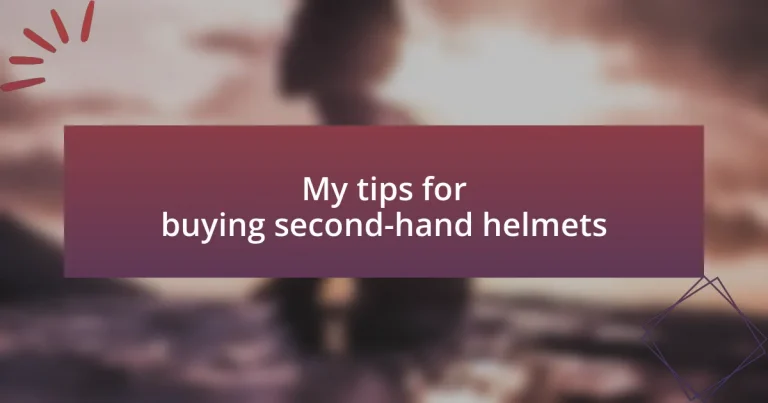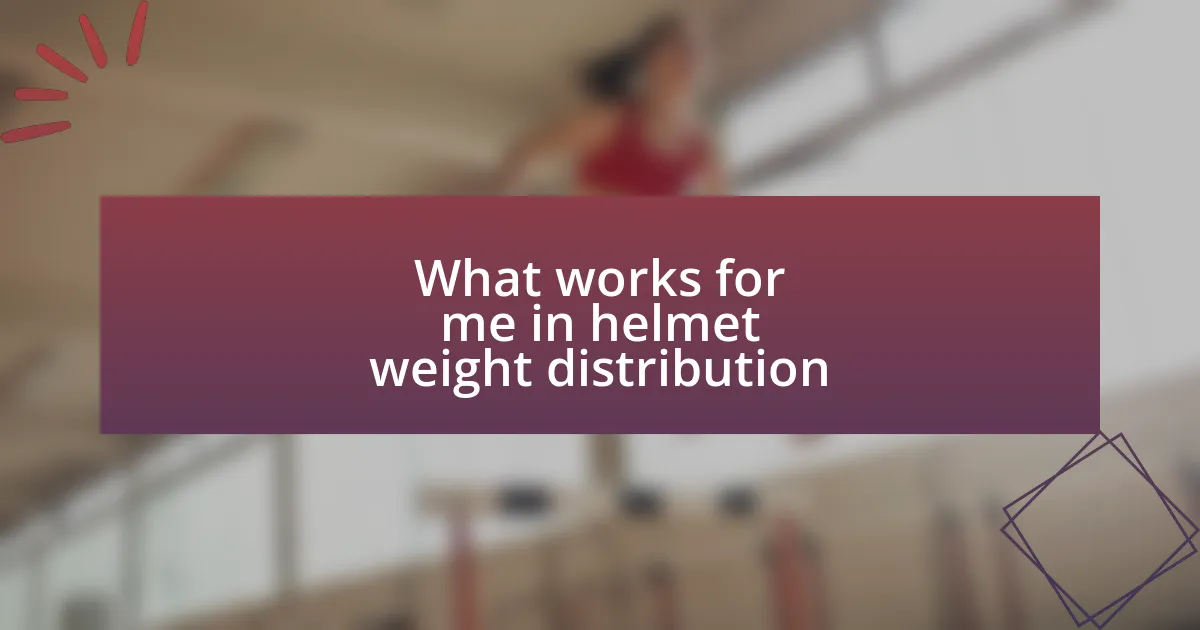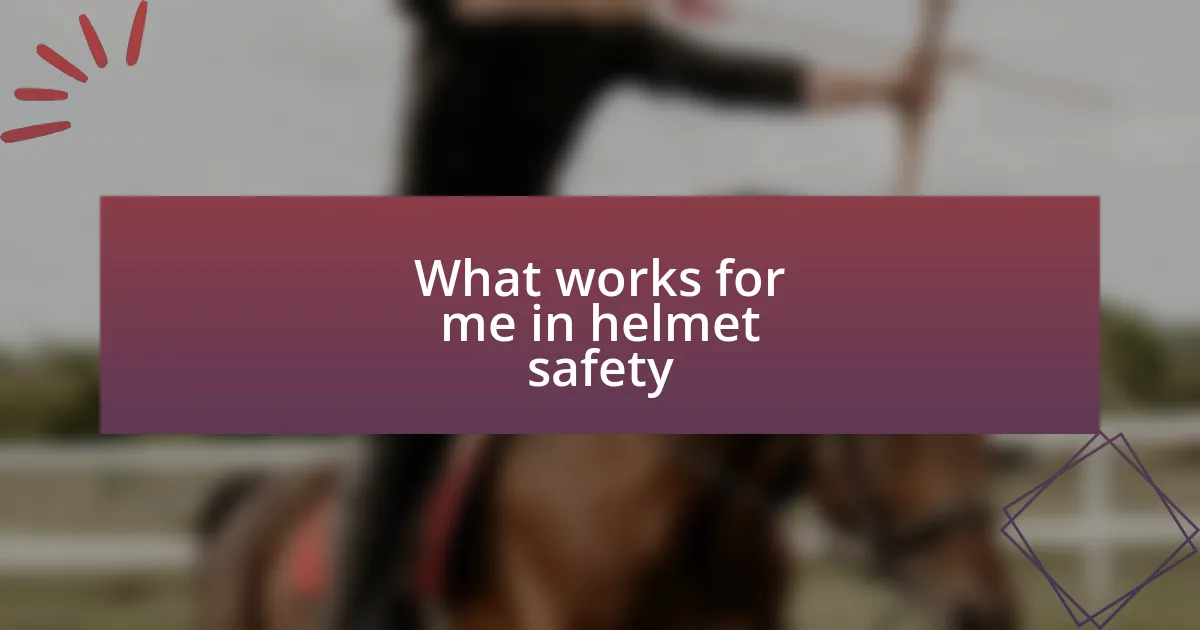Key takeaways:
- Understand and check safety certifications (like DOT, Snell, or ECE) to ensure adequate protection.
- Inspect for visual damage and the condition of interior padding to maintain safety and comfort.
- Verify size, fit, and retention system to prevent distractions while riding and ensure security.
- Research seller reputation and consider negotiating price and warranty for a safer purchase.
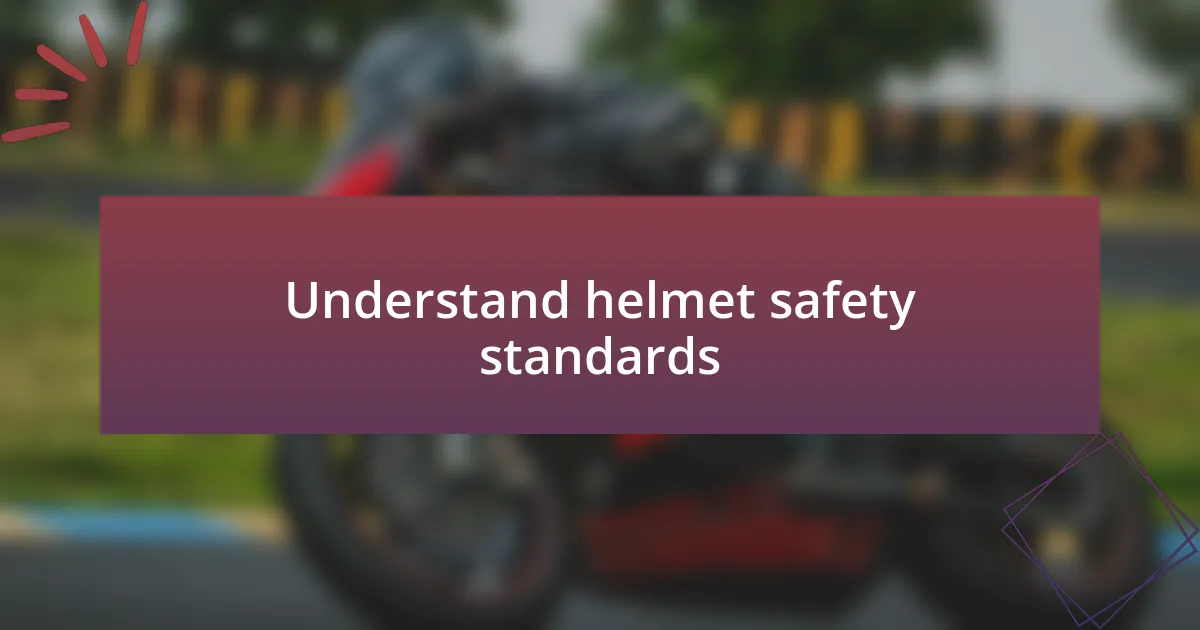
Understand helmet safety standards
When it comes to buying second-hand helmets, understanding safety standards is crucial. For instance, I once considered purchasing a vintage helmet that looked cool but lacked any safety certification. At that moment, I realized the importance of checking labels like DOT, Snell, or ECE, as these indicate the level of protection a helmet provides.
Not all helmets are created equal, and that’s where safety certifications come into play. Have you ever wondered how much risk you’re taking when wearing a helmet without proper standards? I know I do. It’s unsettling to think that an investment in safety could end up being ineffective if the helmet doesn’t meet industry benchmarks.
Moreover, even if a helmet appears in excellent condition, without adhering to recognized safety standards, it may not protect you in a crash. I vividly remember a conversation with a rider who shared a story about her helmet saving her life—she wouldn’t have had that peace of mind if it didn’t meet those tough safety expectations. Understanding these standards not only informs your purchase but can truly be a game-changer for your safety on the road.
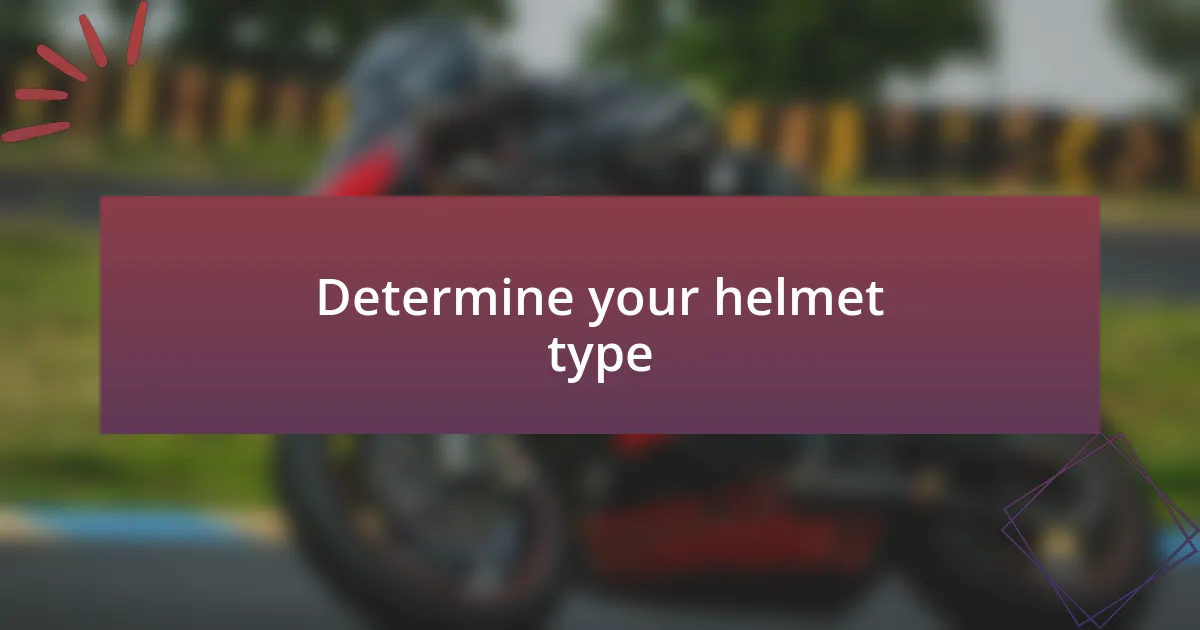
Determine your helmet type
Determining the right type of helmet is essential to ensure both safety and comfort when riding. There are various helmet types — like full-face, half, and modular helmets — each designed for different riding styles and preferences. For example, I once tried a full-face helmet on a long-distance ride and appreciated the enhanced protection and wind noise reduction it offered, which made the experience more enjoyable.
When considering helmet types, think about your riding habits and the environment you’ll be in. If you tend to ride in urban areas, a half helmet might feel more breathable, but I’ve found that it offers less protection in the event of a fall. On the other hand, a full-face helmet can be a bit cumbersome, yet the added protection can be a lifesaver, literally.
Lastly, don’t overlook the importance of fit and comfort along with your helmet type. I recall an experience when I bought a modular helmet for convenience, but if I had simply prioritized the safety and fit aspect over ease, I might have avoided some discomfort during my rides. Your helmet should feel like a natural extension of yourself, offering protection without compromising comfort.
| Helmet Type | Description |
|---|---|
| Full-Face | Offers maximum protection, coverage for the entire head, ideal for faster rides. |
| Half Helmet | Lightweight, less coverage, great for urban riding but offers limited protection. |
| Modular | Combines features of full-face and open-face helmets, provides versatility for different riding conditions. |
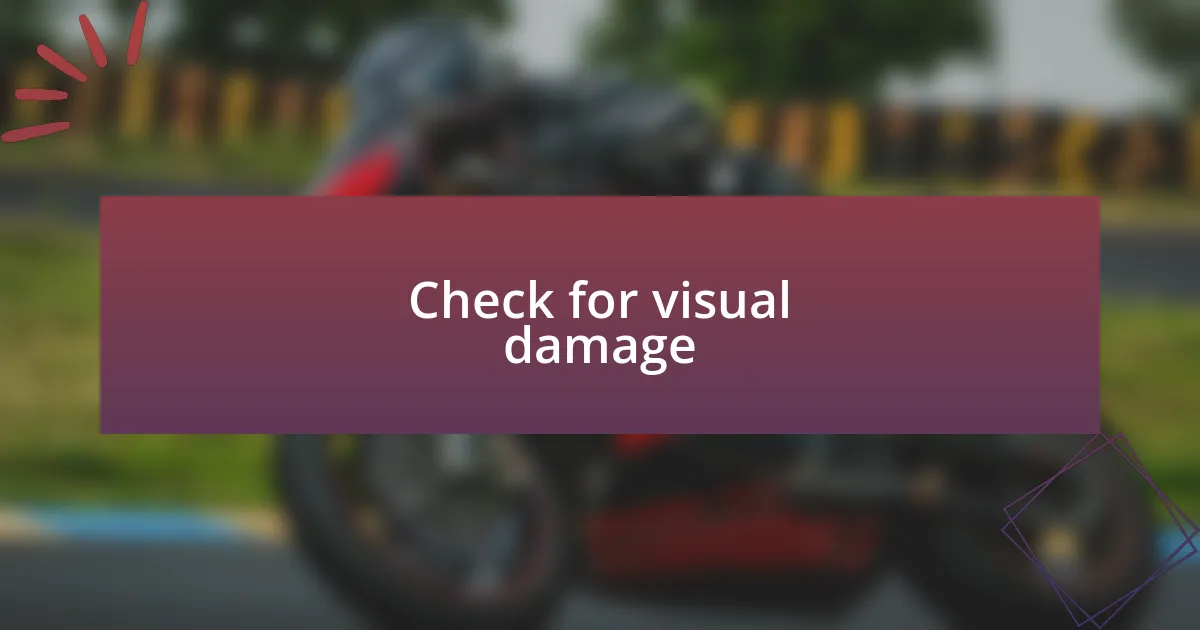
Check for visual damage
Inspecting a second-hand helmet for visual damage is crucial. I remember walking into a shop and spotting a helmet that looked almost brand new, but a closer look revealed a few scratches near the chin bar. It’s easy to miss these aspects at first glance, but they can signal potential issues beneath the surface.
When checking for visual damage, focus on these key areas:
- Cracks or dents: Look for any visible cracks in the outer shell, which can compromise structural integrity.
- Scratches: Check for scratches that may indicate previous impacts, even if the helmet doesn’t show significant damage.
- Padding wear: Examine the interior padding for signs of wear, tears, or mold, which can affect comfort and safety.
- Straps and buckle condition: Inspect the straps for fraying and the buckle for functionality, as these are vital for a secure fit.
Not only does a thorough inspection ensure your helmet’s safety, but it also brings peace of mind knowing that you’re making a safe choice for your riding experience.
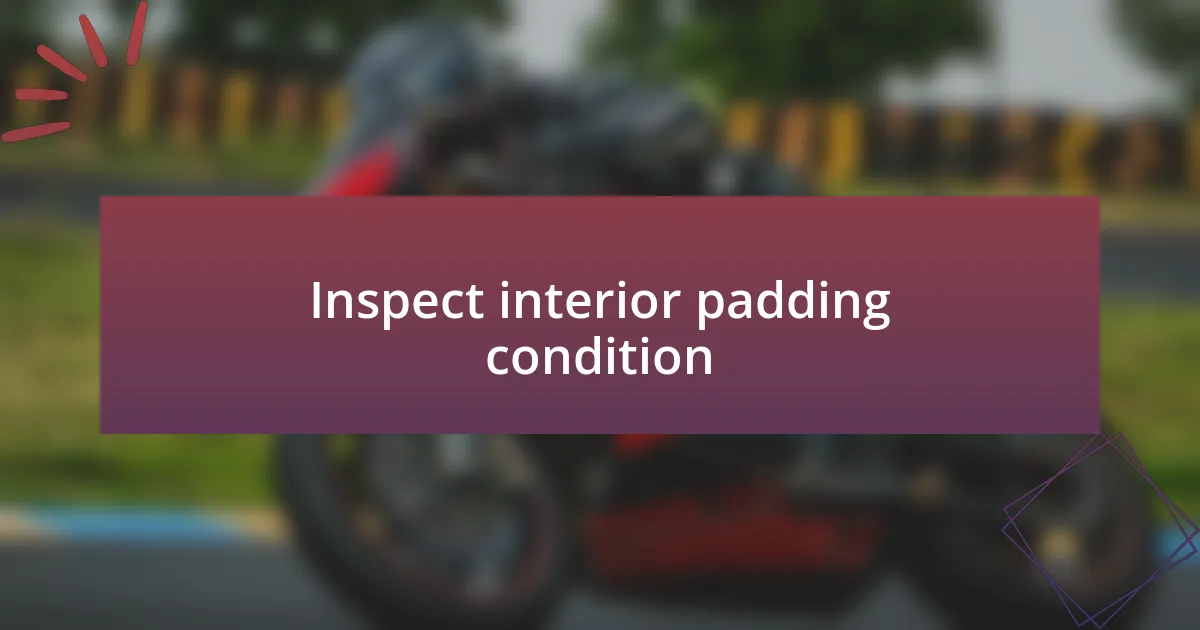
Inspect interior padding condition
When inspecting a second-hand helmet, the condition of the interior padding should be one of your top priorities. I once came across a helmet that seemed perfect from the outside, but when I felt the padding, it was hard as a rock. That hard padding doesn’t just compromise comfort; it can significantly reduce protection during an impact.
Take a moment to carefully examine the padding for any noticeable wear or signs of damage. Over time, padding can compress and lose its shape, offering less cushioning than it should. You might think, “Is it really that important?” Absolutely! I learned firsthand how vital it is for the padding to maintain its original integrity, as any breakdown can lead to an uncomfortable fit and decreased effectiveness in absorbing shock.
Also, don’t shy away from giving the padding a sniff test. A musty smell can indicate mold or mildew, both of which can pose health risks while riding. It might seem trivial, but trust me, nobody wants to deal with that kind of issue on a long ride. Checking the interior padding condition can save you from discomfort or even danger down the road.
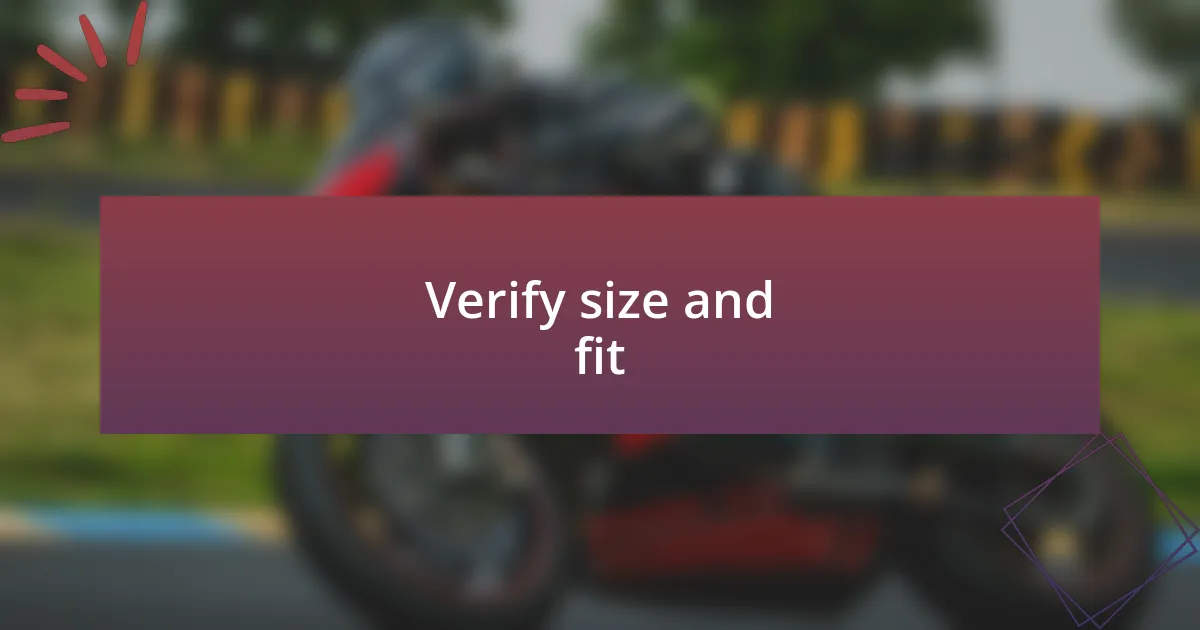
Verify size and fit
When it comes to buying a second-hand helmet, verifying the size and fit is crucial. I once made a purchase without fully considering how the helmet would sit on my head, and I ended up with something that was either too tight or too loose. It’s a frustrating experience that can not only distract you while riding but could also put your safety on the line.
To ensure a proper fit, I recommend trying the helmet on in person if possible. A good helmet should feel snug without creating pressure points. You should be able to shake your head lightly without the helmet moving around too much. Think about how you might feel if you were riding on a bumpy trail; the last thing you want is for your helmet to shift and potentially expose you to danger.
Don’t forget to check the retention system, too. I once encountered a helmet with a broken buckle, which completely compromised the fit. That taught me how essential it is to assess the adjustable straps; they should offer a range of sizes while ensuring a secure fit. When the helmet fits well, not only does it enhance comfort, but it also provides peace of mind knowing it’s doing its job to protect you.
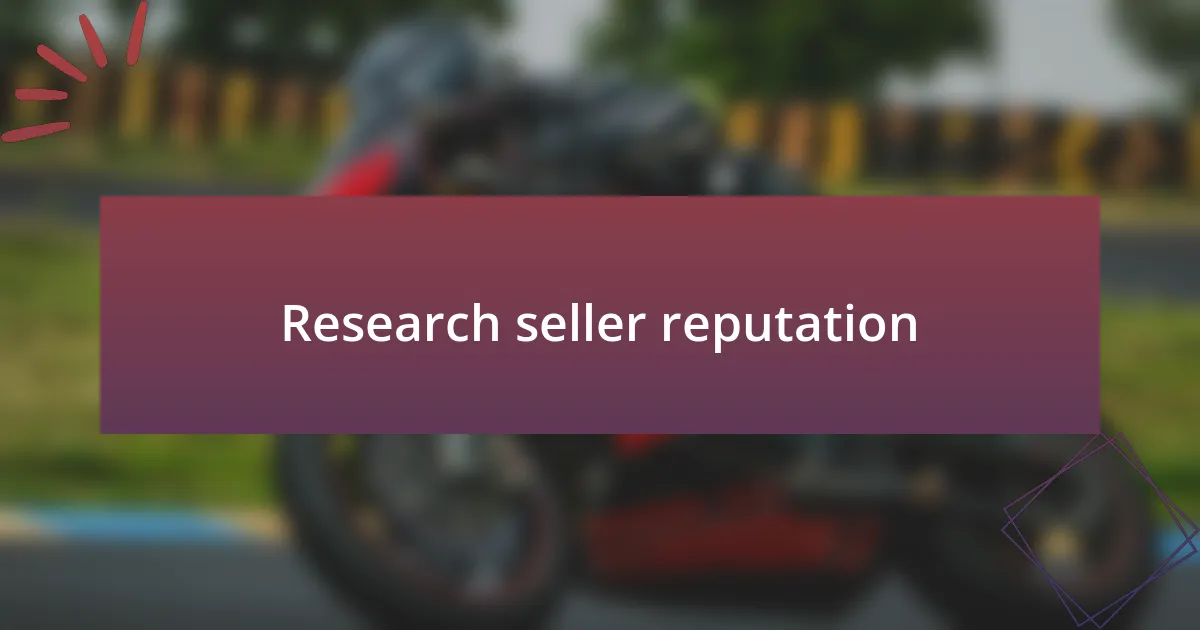
Research seller reputation
I can’t stress enough how crucial it is to research a seller’s reputation before finalizing your purchase. I remember browsing online for second-hand helmets and coming across a seller with glowing reviews. However, digging deeper, I found numerous complaints about misleading product descriptions. That opened my eyes to the importance of not taking reviews at face value.
Look for sellers with consistent positive feedback across multiple platforms. If you’re shopping locally, ask around in riding communities or forums—people often share their experiences. I once relied on a seller recommended by a friend, and while the helmet was great, the seller’s reliability gave me extra confidence in my purchase. Think about how you would feel if you ended up with a helmet that didn’t meet your expectations; wouldn’t you want to avoid that?
Don’t hesitate to reach out to previous buyers for their insights. I once chatted with someone who had bought a helmet from a seller I was considering, and they provided invaluable information about the quality and service. Personal connections and genuine stories can make all the difference in ensuring you make a wise investment. Trust me, a little extra research is worth your peace of mind when it comes to safety gear.
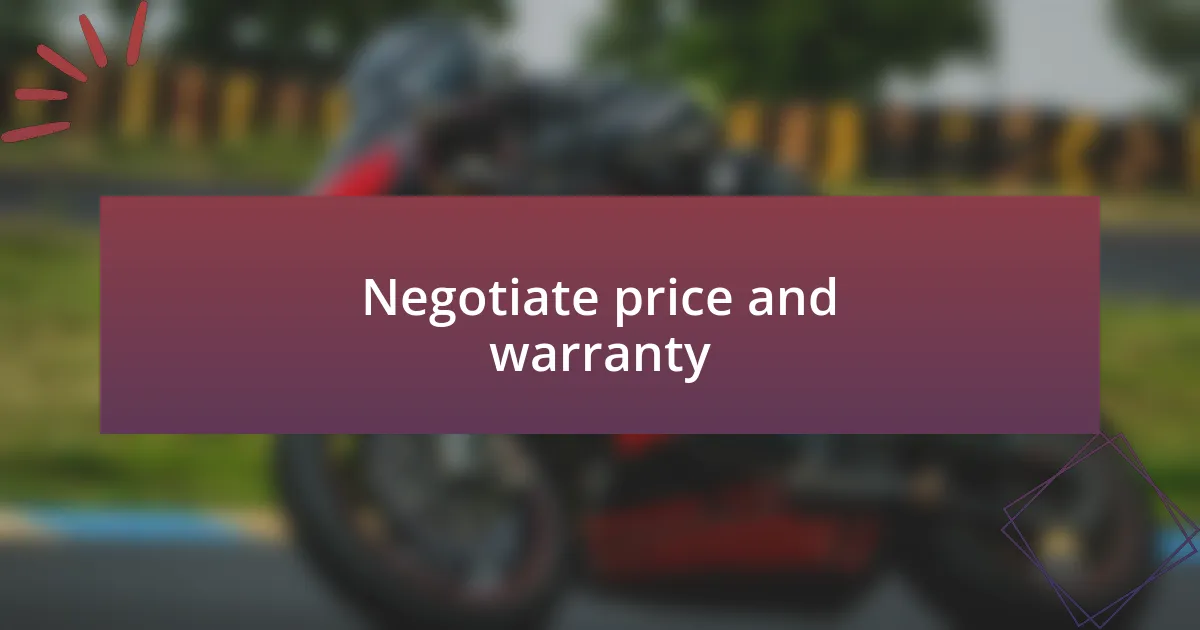
Negotiate price and warranty
When it comes to negotiating the price of a second-hand helmet, there’s often room for discussion. I recall a time when I found a helmet listed at a price I thought was too high for its condition. After pointing out a few scratches and asking if there was flexibility, the seller dropped the price significantly. It’s surprising how many sellers may expect negotiations—don’t be afraid to speak up!
Warranty is another critical aspect to consider. Many sellers overlook this detail, but I’ve always made it a point to ask if the helmet still has any warranty left. On one occasion, I bought a used helmet that still had a year of warranty remaining; it provided an unexpected layer of security that made me feel more confident in my purchase. If you can get a written warranty or guarantee, it’s definitely worth pushing for when striking a deal.
Lastly, think about what value means to you. If a helmet is priced higher and in better shape, is it worth the investment for peace of mind? I’ve certainly paid a little more for a second-hand helmet that felt right and had great reviews—in those cases, the warranty helped justify the price. Balancing price, quality, and warranty can lead you to a much safer and smarter purchase.
